This post may contain affiliate links. If you make a purchase through a link, I may receive a small commission, at no cost to you. These commissions help keep this website up and running, and I thank you for your support. Read my full disclosure here.
Disclaimer: This is not a sponsored post, I paid for this trip myself. All recommendations are my own.
Transylvania (Transilvania) is best known for its magnificent Carpathian Mountains and incredible castles which have inspired tales of bloodthirsty vampires. It’s been on my “must see” list for some time, so I was incredibly excited to be finally going. My husband and I made our way into Brașov, a popular tourist city in Transylvania, from Budapest on the overnight train. It’s a long journey but the fascinating landscape kept us entertained.
Day 1: Budapest to Brașov
Staying in: Brașov
If you’re planning to take this train, then be prepared to be woken up by the rather serious Hungarian border guards at 11pm, and then the Romanian ones at 12am. As we were not expecting it, we were surprised to be woken in the middle of the night by someone banging on our door demanding our passports, so have them in easy reach.
Where Is Transylvania?
Transylvania is located in the central part of Romania. Romania is a member of the European Union (EU) and is located in Southeastern Europe. It borders the Black Sea between Bulgaria.

Eventually we made it into Brașov by about 10.30am. Brașov is a small city surrounded by the peaks of the Southern Carpathian Mountains. It’s known for its historic gothic, baroque and renaissance architecture. The Gothic Black Church dates back over 500 years. The city centre is set up for the tourist trade so there are plenty of cafes and restaurants providing outdoor seating areas to enjoy a drink on a sunny summer’s day. The city square, Piaţa Sfatului, is a popular place to enjoy a drink and some people watching.
Brașov is overlooked by Mt Tâmpa, which displays its own Hollywood style “Brașov” sign. A cable car (fees apply) takes you up to the mountain from the city centre and only takes about 10 minutes. From there it’s a short walk around to the sign and viewing point. It’s a really great way to see the city and allows you to see the original layout with the old city walls. From here, you can either take the cable car back down again or enjoy a leisurely walk back down into the city through the trees. We took the latter as it was a gorgeous sunny day.
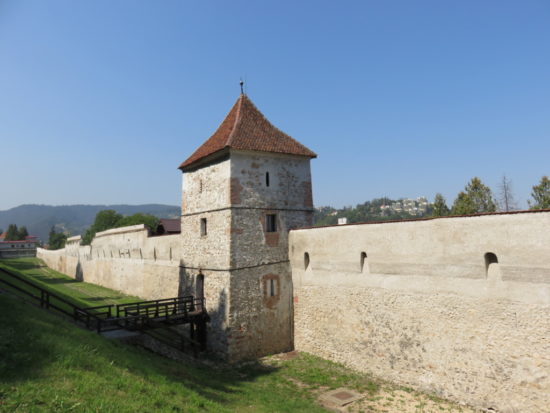
Day 2: Brașov to Sinaia
Staying in: Sinaia
The next day we collected our hire car and set out to Sinaia, a popular place with tourists because of its proximity to the Bucegi Mountains as well as the stunning Peleș Castle and Pelişor Castle. Read my full post on exploring these wonderful fairytale style castles.
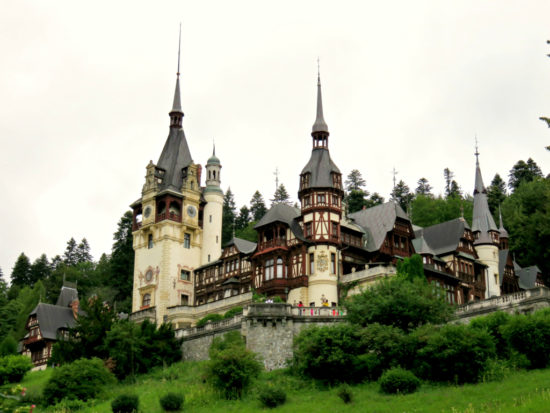
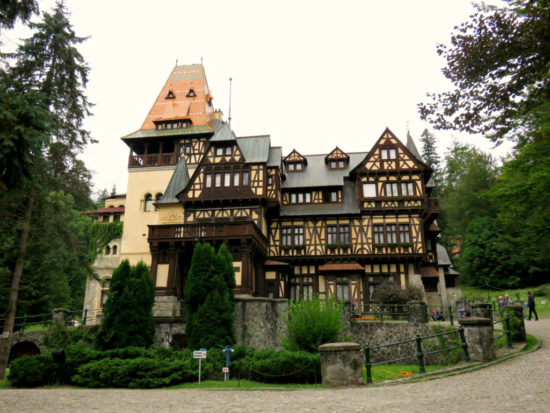
Day 3: Bucegi Mountains
Staying in: Sinaia
The next day we got up early and headed to the village of Buşteni to get the cable car up into the Bucegi Mountains to spend the day hiking and visiting the famous rock formations. Read my full post on Hiking in the Bucegi Mountains.
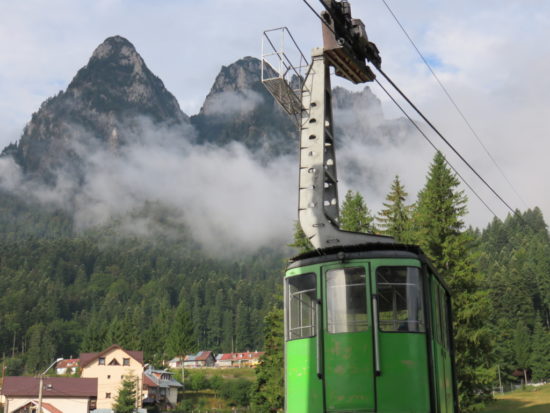
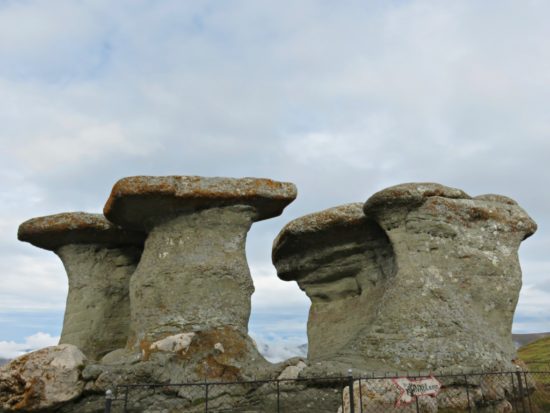
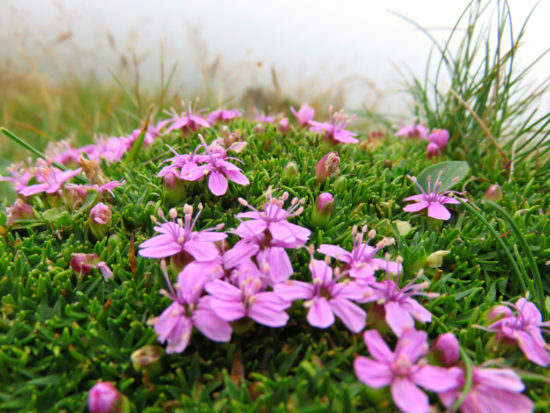
Day 4: Sinaia to Măgura
Staying in: Măgura
The following morning we headed out to Bran to visit the castle famous for its ties to Bram Stoker’s iconic Gothic novel, Dracula. Read my full post on visiting Bran Castle.

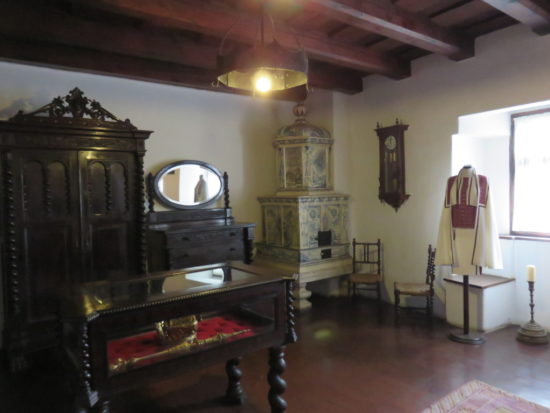
From Bran we headed out to the Piatra Craiului National Park which is in the Southern Carpathian Mountains. You need to purchase tickets to the park, which you can purchase from the ticket machines from the Zarnesti Post Office (12A Tiberiu Spirchez Street); from Piatra Craiului National Parc Viziter Center (Zarnesti, 150 Toplita Stret); or Plaiul Foii Chalet. The tickets don’t cost very much, and you must purchase them, as this money is used to help run the park. You can find out more about the park on their website.
As we planned to stay in Măgura, we took the road from Bran through Zărnești as it was recommended as being safer. The road from Bran to Zărnești was pretty good going, despite it being gravel. However, the road from Zărnești to Măgura was another story. It was really in need of major repair. Unfortunately it began to rain as we drove through Zărnești, and the road had little streams running through it with much of the gravel washed away. Apparently this road has been in dire need of repair for some years and the rain just made it even worse. Large potholes and deep ravines had opened up making it a rather hair raising drive. We literally crawled up the mountainside wishing we could have afforded to hire a 4WD. We were told by locals that a contract had just been signed off to have the road repaired, so for those of you planning your trip to this area, it should hopefully be much improved by the time you get there.
We eventually made it in one piece to Măgura where I had booked to stay at Casa Hille, a budget friendly guest house run by a lovely couple. Our room came with magnificent views of the mountains and countryside and that evening we got to watch some locals preparing for a wedding. A horse drawn wagon loaded with celebrating men singing traditional music stopped outside our guest house as they rounded up the groom and fellow revellers.
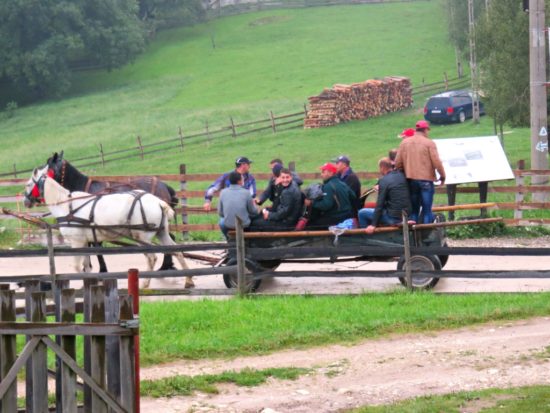
This guest house was one of the best places that we stayed during our trip around Transylvania, and the couple plied us with homemade wine, cognac and sherry as well as large traditional Romanian home cooked meals (the meal plan is an optional extra). Traditional Romanian food does not always look or sound very attractive, but it is really delicious, comfort food. My favourites were the stuffed cabbage rolls called sarmale and the mămăligă (polenta). Now I am not normally a fan of cabbage, but when they are stuffed with Romanian style spiced pork and rice, they are very good! Many of their dishes are served with sour cream, which they call smântână and it tastes so much better and creamier than the kind you get from the supermarket.
Romanians also have a sweet tooth and enjoy baking and desserts. Popular sweet dishes include cakes, strudels and crepes. Kurtoskalacs or chimney cakes are a popular sweet cooked and sold on the street. However, my favourite was the Gogosi, a donut filled with fruit or custard or simply sprinkled in icing sugar. There are lots of delicious bakeries in Romania, so take advantage of the booths that allow you to make impulse purchases as you stroll past.
Romania also has great wine and beer. It is one of Europe’s biggest wine producers and although their wines are aimed at the budget end of the market, there are some excellent wines being produced. Romania also has a good range of beer as well as local alcohol such as palincă which is made from fermented fruit, commonly plums.
Day 5: Măgura
Staying in: Măgura
Our host kindly helped us plan our two full days of hiking as well as providing us with useful information about the area. There are lots of walking trails to enjoy in the Piatra Craiului National Park, and all levels of fitness are catered to. However, before heading out, make sure that you are adequately prepared and are fit enough to traverse the trails that you have chosen, as there are many very challenging ones.
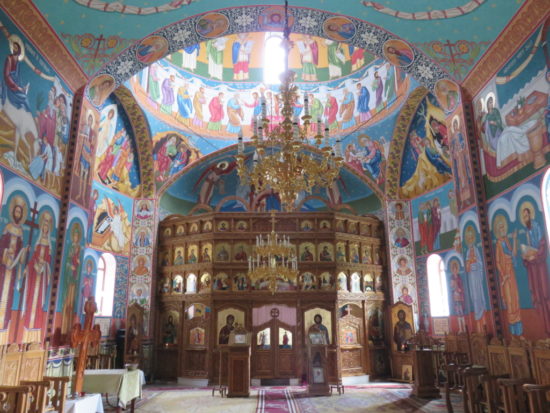
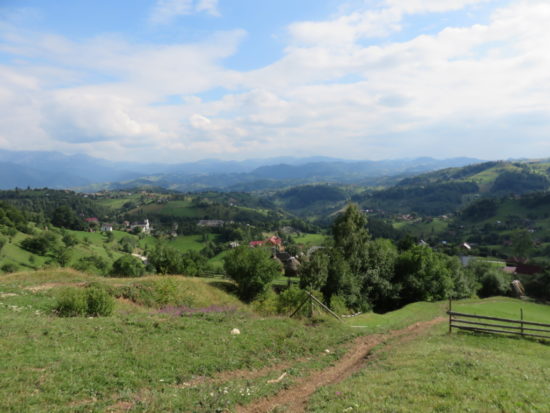
The next day the rain had passed, and the sun was shining. We headed out on a trail from our accommodation over to the village of Peștera on a mix of walking paths and local roads. We made a detour to visit the local monastery, and although it had only been recently built, it was richly decorated inside with beautiful, colourful murals. It was like seeing history in the making. After some food and rest in the afternoon, we ventured up a rather steep path through fields behind our guest house. Once we reached the top, we were rewarded with a stunning 360 degree view of the mountains. It was so peaceful up there that I didn’t want to come back down.
Day 6: Piatra Craiului National Park
Staying in: Măgura
The following day we drove a little way down the mountain and left the car to take a rather steep hike up the mountain and through the forest. Once we eventually made it to the top, it opened up to lush meadows. From this point we chose to head along to Cabana Curmătura, a mountain hut that provides accommodation and food for hikers. This is the perfect place to stop off if you’re walking in this area. We took the opportunity to rest and enjoy a hot drink and some delicious homemade apple pie whilst taking in the magnificent mountain views.
Once we had regained our strength, we continued to follow trails down the mountain, through forest and tranquil meadows. We ended our hike walking through a deep gully surrounded by amazing canyons. It was a wonderful place to end our time in Piatra Craiului.
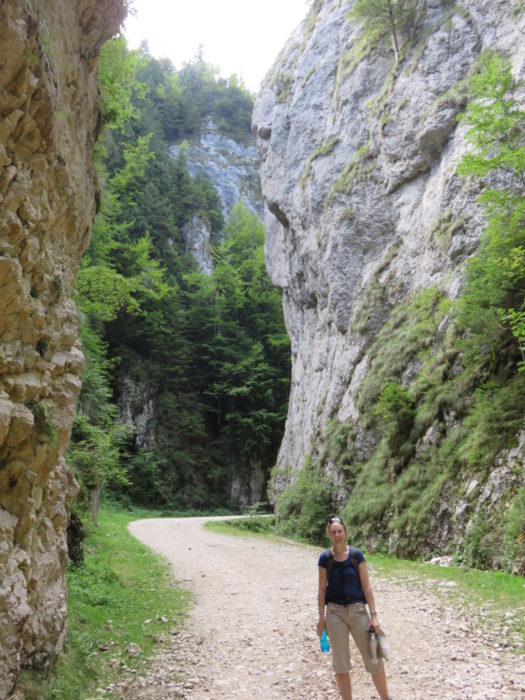
A word of warning to those of you planning to hike in these areas – be very careful when walking near grazing animals if there are guard dogs. We came upon a herd of sheep that were spread over the path we were on and suddenly we were confronted by a sheep dog in full attack mode and another dog coming up our rear. We were literally moments from being attacked before the shepherd finally appeared and managed to get the dogs under control. I would recommend taking some bear/dog spray to keep you safe as these are not the normal kind of farm dogs that I grew up with, but ones trained to protect the animals from bears, wild dogs and wolves.
Day 7: Măgura to Vidraru
Staying in: Vidraru
The next day we left Măgura and made our way carefully back down the rutted road and towards the famous Transfăgărășan DN7C highway. On our way we decided to visit the Libearty Bear Sanctuary just outside of Zărnești. The 66 acre sanctuary is home to over 70 rescued bears that were once kept in cruel conditions. Some visitors struggled with the concept of the sanctuary and confused it with a zoo, not understanding why our visit time was limited to the morning (to reduce the disturbance to the bears, but at the same time trying to get everyone who turns up an opportunity to see them) and why they didn’t breed the bears (they aim to reduce the number of bears in captivity, not create more). However, the staff did their best to explain the sanctuary’s ethos and share each bear’s heartbreaking story. It was a real pleasure to see the bears run and play in the water.
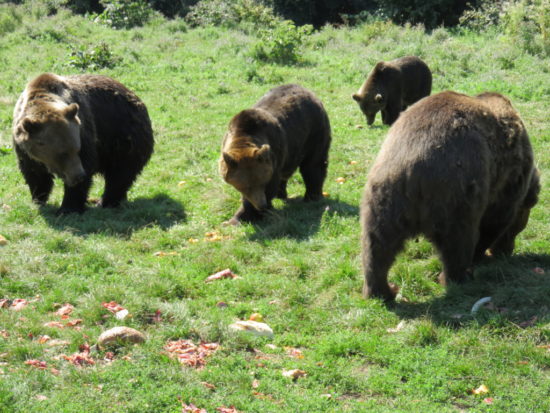
We decided to head towards the Transfăgărășan road from the south through Bran. Most people don’t go this way and only approach it from the north and then leave by the same road, as it is a bit faster. But we had time on our hands and the drive was so beautiful it was well worth it. We had breathtaking views of mountains and meadows the entire drive and the roads were in good repair. Travelling around the Transylvanian countryside is like stepping back in time. Families loaded onto horse drawn carts to travel into town are commonplace. As we were there at the end of summer, everyone was out and about helping to gather hay for the winter. They cut the grass by hand using scythes and then rake it up into big piles to be loaded onto horse drawn wagons. This grass is then dried and stored on traditional hay stacks.
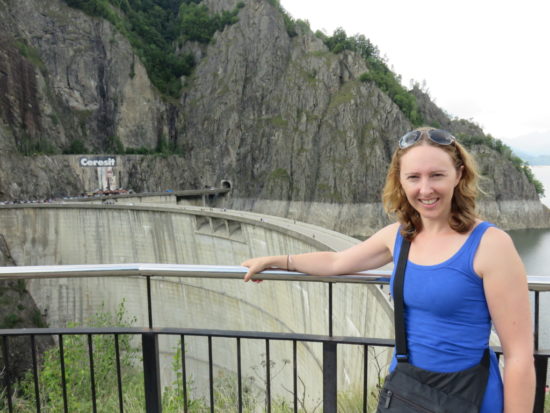
We drove until we reached the Vidraru dam where we stopped for the night at Hotel Posada Vidraru. We spent the afternoon walking around the dam and admiring the magnificent engineering. Vidraru dam is one of the largest hydroelectric plants in Europe and provides beautiful views of the Vidraru Lake. I loved the statue of Prometheus holding a lightning bolt above his head. You can get a closer look at him by climbing up the staircase on the side of the road.
Read my full guide to driving the Transfăgărășan.
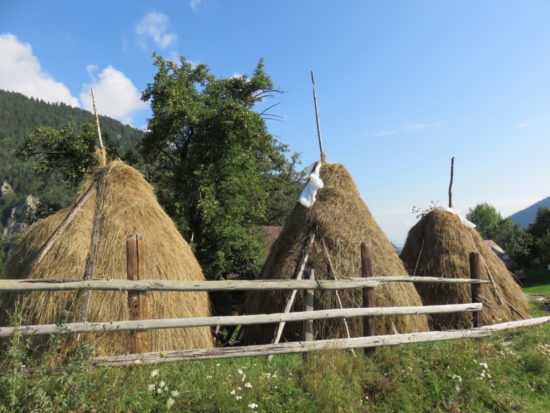

Day 7: Vidraru to Sibiu
Staying in: Sibiu
The next morning we got up early to drive the remainder of the Transfăgărășan. This is the most famous part of the road and gets very busy, so getting up early was well worth it. We were one of the few cars on the road and so got to enjoy it without the usual tourist hustle and bustle. The views were amazing, and although it looks rather scary, the road actually drives very well. At the highest point of the road there is a cable car and some markets. This is also the best place for views of the squiggliest part of the road. As we neared the end of the Transfăgărășan, the road was beginning to get busy again as a classic car rally, which was part of the Sibiu Rally Championship, had commenced.
Read my full guide to driving the Transfăgărășan.
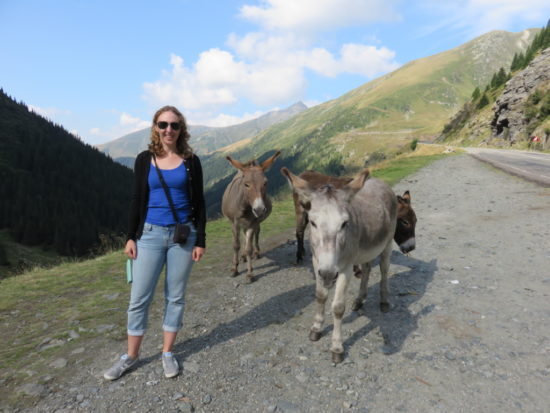
Planning to Drive the Transfăgărășan?
Due to weather conditions the Transfăgărășan is only open from the 1st of July until the end of October. However, be aware that these dates may be adjusted according to the weather.
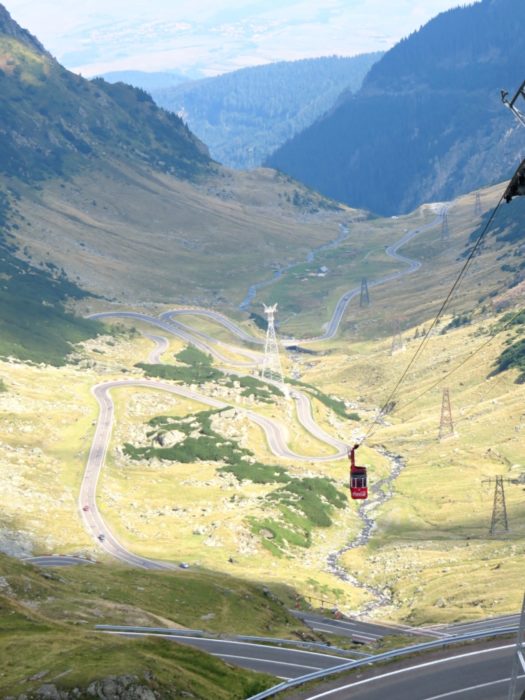
We drove on to the small historic city of Sibiu, which was built in the 12th century by German settlers known as Transylvanian Saxons. It was one of the largest and wealthiest of the seven walled citadels, so there are many impressive buildings. This city is perfect for strolling around, getting lost amongst the beautiful buildings and enjoying a meal and some people watching in the square.
The Upper town is home to most of Sibiu’s historic sights, and the Lower town, lined with colourful houses on cobblestone streets and bounded by imposing city walls and defence towers overlooking the river Cibin. These two areas are connected by the Passage of Stairs, two ramifications of stairs and arcades surrounding the city walls built in the 13th century. At the crossroad of Turnului Street with Alexandru Odobescu Street, old houses are dating from the 17th century.
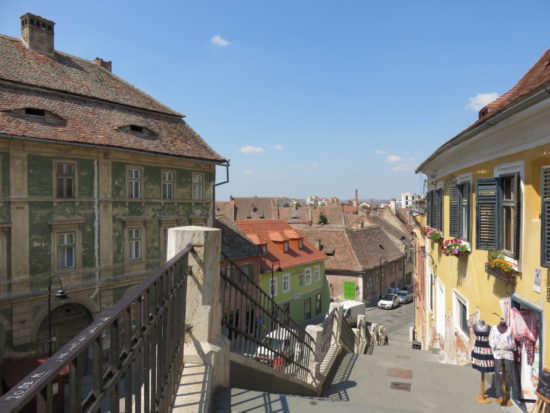
We headed up the Turnul Sfatului (The Tower of the Council), which for a small fee and a bit of climbing, you are provided fabulous views of the city. Another highlight is Sibiu’s 15th century towers (Turnurile Sibiului). The imposing walls of this city include fortifications of 39 defensive towers, five bulwarks, four gates and five artillery batteries.
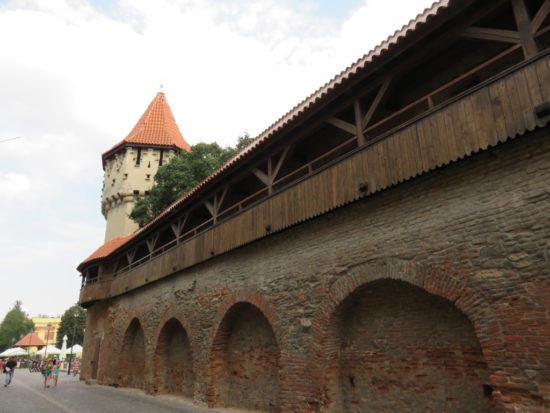
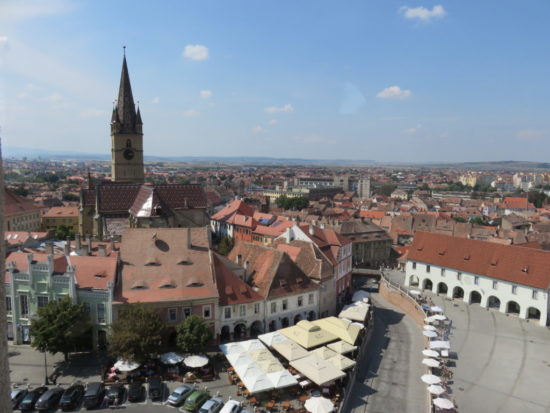
Day 8: Sibiu to Bucharest
Staying in: Bucharest
At this point in our journey we were sad to be nearing the end. We drove on to the vibrant city of Bucharest, where we were scheduled to fly out the following day. The weather had become extremely hot but we managed to visit the main sites such as the Palace of the Parliament (Casa Poporului), the Old Town, and the Arch Triumph, before collapsing at a bar to enjoy a cold drink whilst reflecting on the many wonderful experiences we had enjoyed.
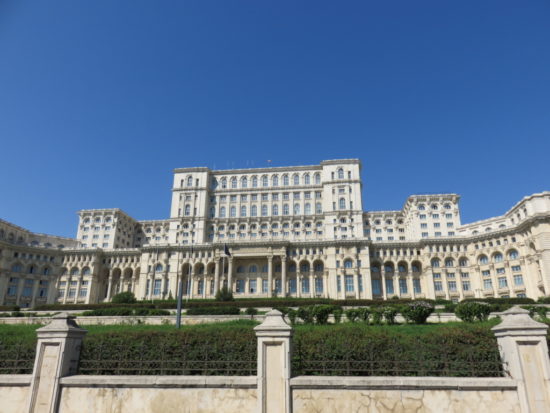
Practical Tips for Visiting Transylvania
- Language: Romanian. Although most people we came across spoke English in the tourist areas. However, do try your hand at a few Romanian words:
- Yes = Da (da)
- No = Nu (noo)
- Please = Vă rog (vuh ROHG)
- Thank you = Mulţumesc (Mool-tsoo-mesk)
- Hello = Bună ziua (Boo-nuh zee-wa)
- Currency: Leu, plural lei (pronounced lay), which is abbreviated as RON
- Tipping: Not required, but people usually round up.
- Electricity: The electrical current is 230 volts AC. Wall outlets generally take the European two round prong plugs. However, you are better off purchasing a worldwide adaptor that can be used in Romania as well other countries. At least then you can potentially get some further use out of it on future vacations. If you’re taking a number of electronics with you, then I would recommend purchasing a couple of these adaptors.
- Navigating: Use Google’s free Offline Maps which allows you to access free maps for navigating that can be used offline i.e. you don’t need WIFI, data, or roaming to be able to use them. Follow this detailed guide on how to use Googles Offline Maps. Even if you have a data plan in Romania, don’t rely it in case you have trouble accessing the mobile networks.
- Using your phone as a GPS will drain your battery quickly, so use a portable battery charger which you can use to charge your phone and any other USB chargeable devices.
- If you prefer a paper map, then purchase a Romanian road map before you go. At least it’s reliable and won’t run out of battery or malfunction like the electronic options!
- Read more Essential Travel Tips and Information for Transylvania.

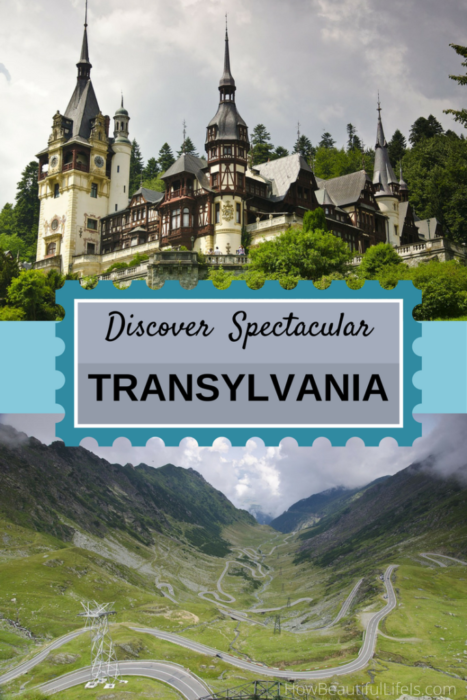
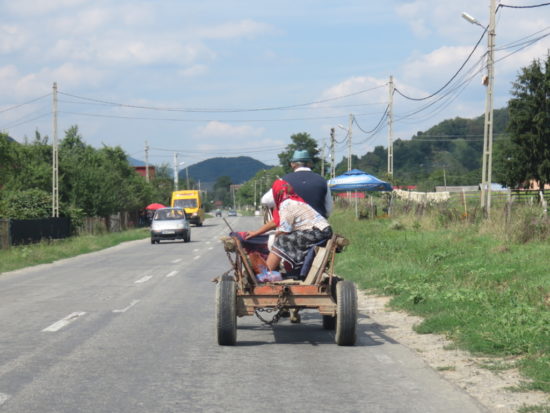
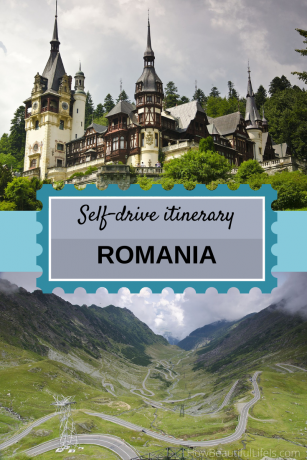
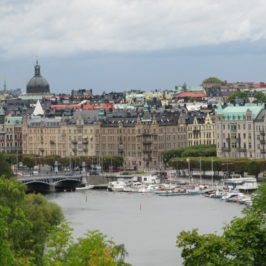

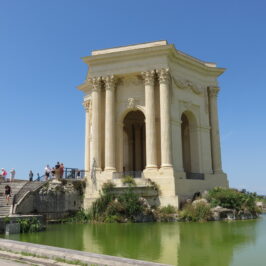

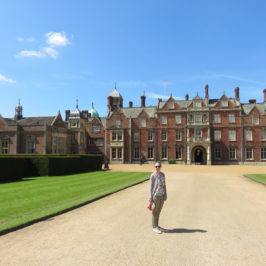
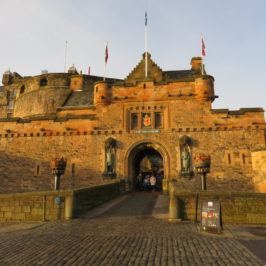
Leave a Reply